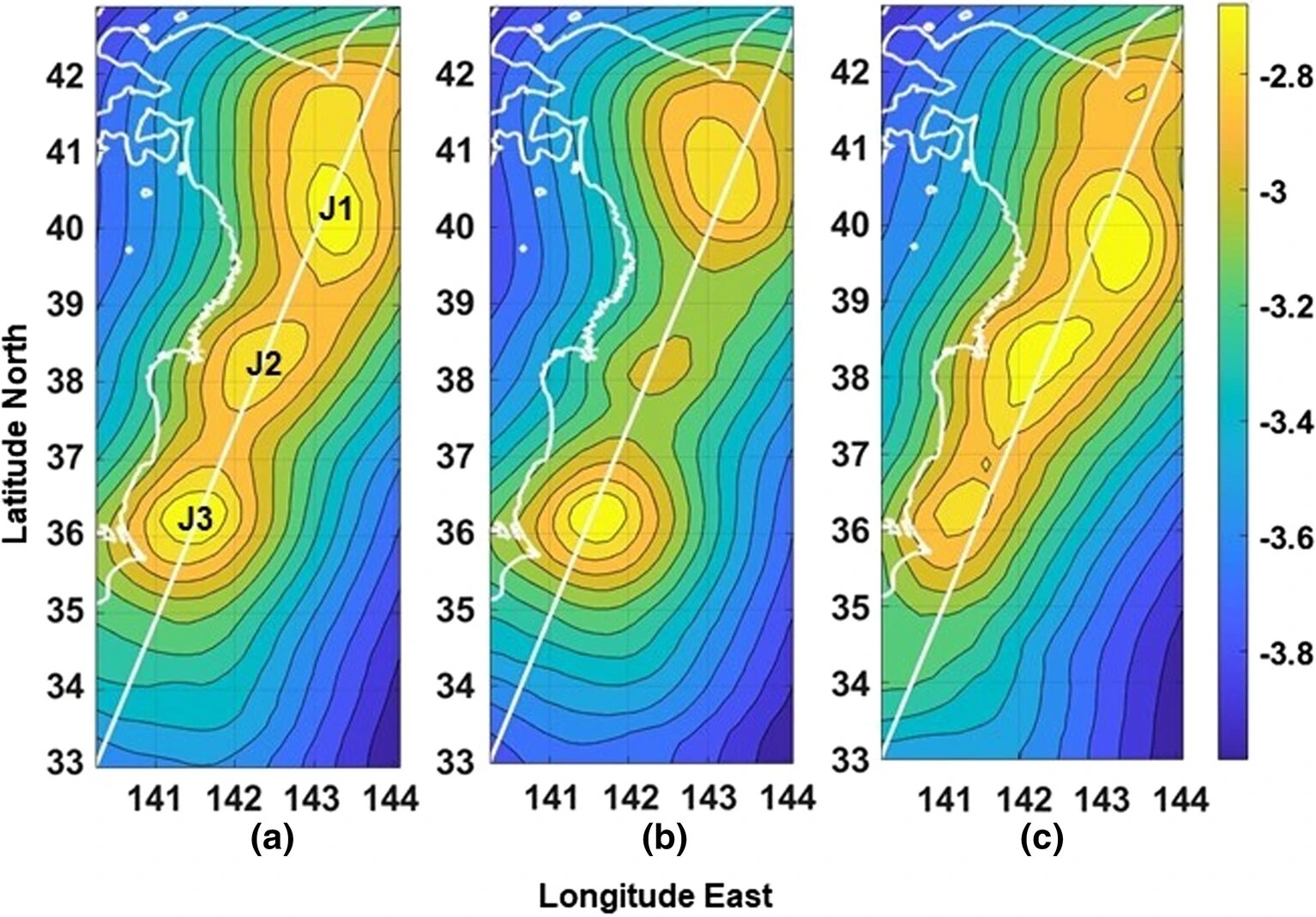In the article published in «Pure and Applied Geophysics», a modified k-nearest neighbors method is introduced, which is designed for statistically meaningful estimation of the field intensity based on locations of events. This method is used to perform a detailed analysis of the seismic intensity field in the region of Japan, shown on the figure, and found spots of increased seismic activity.

The introduced modified k-nearest neighbors method can be applied to various problems where one needs to estimate values of a function based on its values on a set of arbitrarily located points. Estimates of the intensity of the seismic field based on spatial coordinates of earthquakes registered in a catalog over some time interval are obtained. The same approach can be applied in order to estimate spatial structure of any other physical characteristic based on its values measured in a number of discrete points. The seismic field is highly heterogeneous, and in many investigations these heterogeneities are the subject of interest rather than an interfering factor that needs to be minimized.
The proposed modified k-nearest neighbors method can prove useful for a number of practical applications where interpolation and smoothing on an irregular domain is involved. Examples of such applications include geophysical data processing, as well as problems of seismic risk assessment and seismic zoning, choice of locations for critical infrastructural objects, hazardous waste deposits etc.
Source: Pisarenko V.F., Pisarenko D.V. A Modified k-Nearest-Neighbors Method and Its Application to Estimation of Seismic Intensity // Pure and Applied Geophysics. 2021. DOI:10.1007/s00024-021-02717-y

